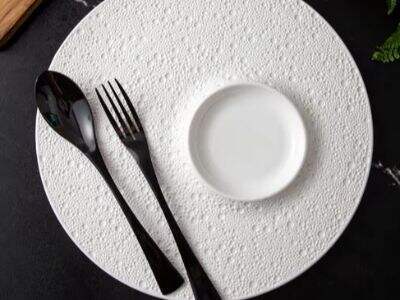Яккингизда эски керамика плиткаларингиз бутунликда нимага айланади, улар қайта ишлатиладими, ёки сирнари тушганда нимага айланади деб суров бергансизми? Улар қайта ишлатилishi мумкинми? Аммо, бу саволни яқинлаштириб хал килиш тенглиги йўқ. Шунга оладан, бу масалани ҳал қиламиз ва керамика плитка қайта ишлатиш билан боғлиқ асلي вазиятни таҳлил қиламиз.

Керамика плиткалар нега қайта ишлатиш даражасида қабул қилинмайди
Биринчи сабаби, Fenn керамика плиткалари глина, глазур ва рисма кabi бирлашган материалдан тушиб чиқади. Аммо, улар бир necha turdagi qismlardan iborat bo'lib, ularni қайта ишлатиш ва туғри қайта ишлатиш мушкил бўлиши мумкин. Бу ерда қайта ишлатиш markazlari уларни ишлаб чиқаришда муammoga қарши келади va uni қайта ишлатишда.
Умидварликлар бир неча.
Bir necha qayta ishlab chiqarish markazlari keramik tabaqni qabul qilishi mumkin. Ammo, keramik tabaqlar haqida ko'proq ma'lumot olish uchun mahalliy qayta ishlab chiqarish dasturi, zabolotnoy yoki sayr atrofida bog'liq tashkilotlar bilan aloqa qilish aqlli ideya hisoblanadi, chunki ko'plab joylarda ushbu material turiga nisbatan o'zaro farqli siyosatlar mavjud. Ba'zi hududlar shu turdagi materiallarni qayta ishlab chiqarish uchun maxsus dasturlarga ega bo'lishi ham mumkin.Keramik qoshqalar, va shu haqida bilishgiz muzlatgan bo'lsa-da, har doim so'rab ko'rish qiymatli bo'ladi, o'ylayman.
Agar siz qayta ishlab chiqarish markazingiz keramik tabaqni qabul qilayotganini aniqlasangiz ham, barcha keramikalar qayta ishlab chiqarilishi mumkin emas.
Xususan, quyoshli yoki plastik bilan to'langan keramika, jadvaliy sanoatga mos dekoratsiya yaratish uchun, qayta ishlab chiqarish muammolariga sabab bo'lishi mumkin. Eslatib o'tamizki, barcha keramik maxsulotlar o'sirgan ovqatli sabzavotlarni yetkazish uchun qayta ishlanganligi yoki qayta ishlanganligi yo'q bo'lishi mumkin, chunki ular noto'g'ri toxik kimyoviy tarkiblardan iborat bo'lishi mumkin. Ushbu ma'lumotlar keramikani qayta ishlab chiqarishning qanday murakkab bo'lishiga oid ta'rif beradi.Seramika plitalari.
Agar uy ichidagi keramik tabaqlardan bosh qilish uchun yo'llarni qidirayotgan bo'lsangiz, ularni mas'uliyatli ravishda tashlab yuborish uchun quyidagi oddiy qadamlarni bajaring.
Agar mahalliy qayta ishlab chiqarish dasturi qabul qilinadiganlar orasida emasligini aniqlaysangizKeramik chaqon va suv yuvalaritabaqlardir, narama. Ammo ularni mas'uliyatli ravishda tashlab yuborishning boshqa usullari ham mavjud.
Buni amalga oshirish mumkin bo'lgan bir necha yo'nalishlar mavjud:
Boshqalariga berish: Agar eslayingiz hali ishlatilishi mumkin bo'lsa, uning thrift do'koni yoki mahalliy hayotiy jamoaga berilishi haqida o'ylab ko'ring. Shuning uchun shu joyda kerak bo'lmasa-da, har doim yaxshi taomga ega bo'lishni baholaydigan odam bor va siz kam daromadli odamlarga yordam berishingiz mumkin.
Ularidan yangi narsalar yaratish: Yarreklashtiring. Eski tabaqlaringizdan yangi va ziboyli narsalarga aylantirishingiz mumkin. Ular bilan qilishingiz mumkin bo'lgan bir narsa bu - uyda mosaika ishini yaratish yoki bog'ingizni bezovchi narsalar sifatida ishlatish. Eskisi tabaqni yangilash ideyasi
Bolt Inchunks: Keramik pialalar boshqa materiallar kabi qayta ishlangan bo'lmaydi, lekin yetarli ko'p vaqt o'tgandan so'ngular ham yoriladi. Agar ushbu yo'lni tanlarsangiz, qayiqni naroqat qilib kichik qismlarga tushiring. Ushbu qismlarni kompost qutisiga ham olib borishingiz mumkin, bu esa jarayonni tezlashtiradi.
Agar Siz Dunyo uchun yordam berishga Qoniqmasangiz, Keramik Pialalar Eko-Dostlikli ekanligida shubha bormasligi kerak
Bu esa eng ko'p odamlarning keramikaning ekologik sifatda yaxshi ekanligini o'ylash sababini tashkil qiladi, chunki ular tabiiy materiallardan tayyorlangan. Biroq, keramik pialalarni ishlab chiqarish va oldindan olib tashlashi ekologik nuqo'dadan ko'rinadigan paydo bo'lishi mumkin. Shuning uchun, tushunarliki u holda kattaroq talabga ega.
Keramik taqalardan yaratiish uchun ko'p energiya va resurslarga ehtiyoj bor. Masalan, ushbu turdagi keramika ishlab chiqilganda ishlatiladigan yisht va boshqa keramik materiallar hayvonlarga manfiy ta'sir o'tkazishi mumkin. Shuningdek, materiallar va yakunlangan mahsulotlar transport qilinadi, bu esa havaga notog'ri tashqiqlar va iklim o'zgarishlariga qo'shimcha sabab bo'ladi.
Biz keramik taqalarimizni axlatga tashlaymiz va bu hozirdagi axlat muammosiga qo'shimcha bo'ladi. Keramik haqida o'ylang - barchasi axlat joylarida qayta ishlash uchun juda sekin tempoda pastki holatga yetib boradi. Ushbu vaqt davom etganida ular yerda toksikdor tarkiblarni ajratishi mumkin, bu o'simliklarga, hayvonlarga va shu jumladan odamlarga xavfli bo'lishi mumkin.
 EN
EN AR
AR HR
HR CS
CS DA
DA NL
NL FI
FI FR
FR DE
DE EL
EL HI
HI IT
IT JA
JA KO
KO NO
NO PL
PL PT
PT RU
RU ES
ES SV
SV TL
TL LT
LT SR
SR SK
SK SL
SL HU
HU TH
TH FA
FA AF
AF MS
MS GA
GA IS
IS AZ
AZ EU
EU BS
BS LA
LA KK
KK UZ
UZ AM
AM KY
KY